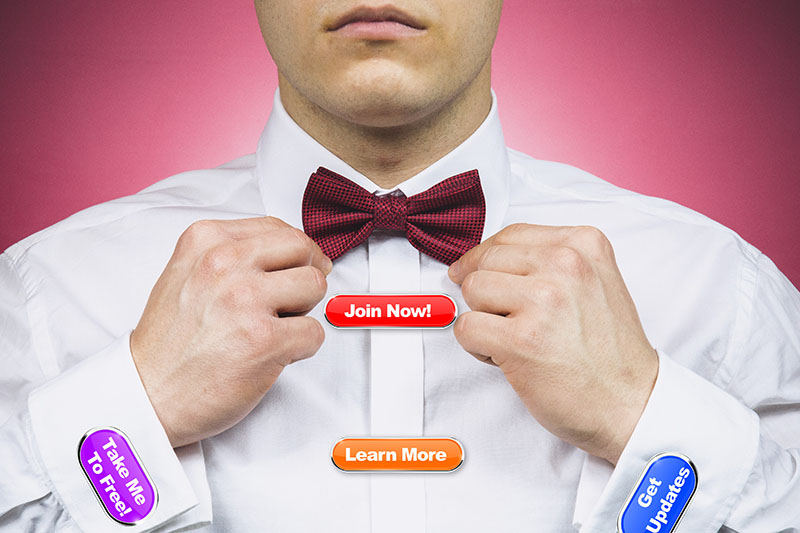Leads are the lifeblood of your business. Yet, if you’re like most marketers, you’re having trouble generating enough of them. Well-executed and placed CTAs (calls to action) are great at generating leads and using them is an opportunity that can’t be overlooked.
HubSpot’s 2018 List of Marketing Statistics is revealing. Even though most marketers are primarily focused on lead conversion, 4 out of 5 are only “slightly effective” at generating the leads they rely on. Creating and positioning CTAs that flood you with qualified leads would be a bonanza for your bottom line.
What are the Elements of a Good CTA?
Every time someone clicks on a CTA, they’re expressing some level of interest in your company. A click typically presents the user with a form to fill in before receiving your valuable offer. Simple, right? So why do 80% of marketers complain that what they’re doing isn’t bring in the leads they need?
Let’s look into some of the elements that make a good CTA.
1. The Hook
You want qualified leads. Attracting just anyone is dangerous. No matter what size your business is, attracting hordes of leads with zero interest in your product or service costs you money and wastes your valuable time, one way or another.
Hooks don’t have to be complicated. Typical hooks include:
- Free trial: Great if they’re attracting qualified leads, not-so-great if they attract everyone to try a physical rather than digital product and then you get a boatload of cancellations.
- Blog updates: If you have a great blog, maximize it.
- A pdf listing resources: A good choice with many applications (The 100 Best …)
- Newsletter: Overused, but still good although not as productive as other CTAs in many cases. Make it appealing!
- E-books and e-courses: More complicated hooks take work, but e-books or e-courses can be worth a lot more than the time they take to create. They help establish you as an authority in your niche. A good e-book that improves the reader’s life or business can be lead-generating blockbusters for a long time and may require no more than occasional updates.
2. The Copy
You need to grab the reader’s attention. “Download Now” or “Click Here” have been overused, and might even turn off an otherwise-interested lead. The CTA has to be backed up by the content that drew the visitor to your website.
Online marketing expert Neil Patel offers this example:
Free Course: “Double your traffic in 30 days” + Secret bonus (valued at $300).
Examine the construction of this great CTA for an e-course.
- The title said “Free Course”
- It makes a great offer: double your traffic in 30 days
- Neil then offers a secret bonus worth $300
- Next, a form asks for your email ID
- The button says, “Yes, Let’s Start the FREE Course”
- Finally, below the button, Neil promises 100% privacy and no spam, just to close the deal.
If you’re interested in growing your web traffic – and who isn’t – you’d find it hard not to click. In this example, Neil didn’t ask for a first name, only an email address. A first name is great for personalizing emails, but the more fields you have on your form, the more people will abandon the form.
3. Design
A well-designed CTA has to stand out. You’ll find a lot of information on the psychology of color, but the main point is that it needs to attract the eye. Surrounding the CTA with white space achieves a clean look.
4. Location
Figuring out the best spot on the page for your CTA can be frustrating. Here are some options.
- Above the fold: All “above the fold” really means online is the top of the page, making your CTA the first thing people see in an impossible to miss spot. This works well if the visitor knows what your site is all about. Visitors who are unfamiliar with you or your business aren’t likely to click until they learn more and feel comfortable.
- Top right: Works great for blogs.
- End of content: CTAs positioned at the end of the content indicate an interested reader who may want to take an action to learn more or buy.
- Bottom right: A static CTA would look like another part of the sidebar. In some cases, movement can be added so it scrolls up and down.
- Header: An app like hello bar allows you to place a CTA at the top of your page.
- Footer: Although used less often, CTAs located here would also attract qualified users who’ve read to the end.
- Pop-up: They may be hated, but if they’re not spammy, they can still work.
Want help crafting the perfect CTA? Contact BXP Creative today to discuss your next project.




